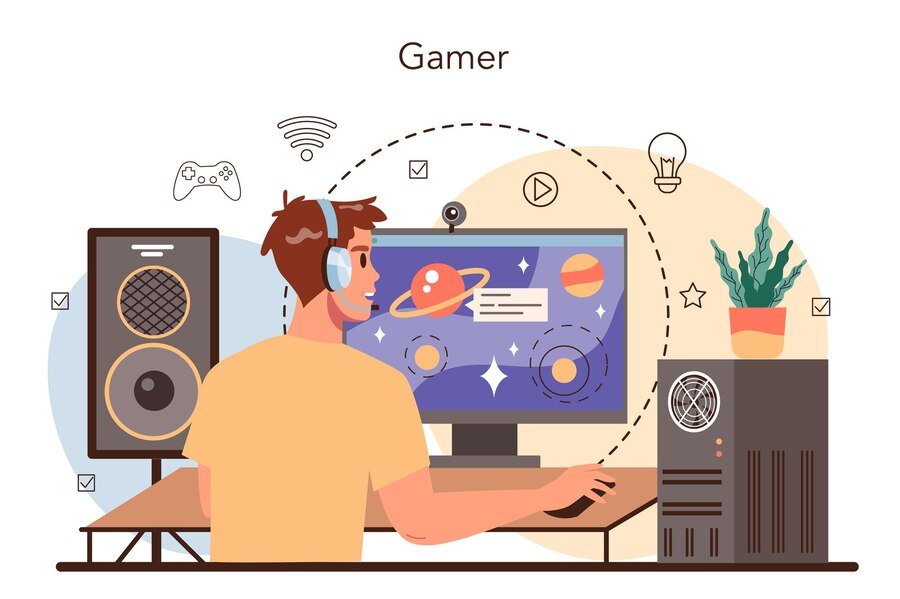Understanding player behavior is key to creating engaging experiences in the competitive gaming world. Player analytics refers to gathering and studying data on how players engage with a game. This information can help developers improve gameplay, increase player satisfaction, and boost a game’s success.
Understanding Player Analytics
Before understanding how player analytics can enhance gameplay, it’s important to understand what it is and why it matters.
Definition of Player Analytics
Player analytics refers to systematically collecting and analyzing data related to player behavior and preferences. This can include data on player movements, choices, engagement levels, and more.
Importance of Player Analytics
| Importance | Description |
|---|---|
| Informs Game Design | Helps developers understand what players enjoy, allowing for better game design decisions. |
| Enhances Player Experience | Identifies pain points and areas for improvement, leading to a more enjoyable gameplay experience. |
| Increases Retention Rates | Understanding why players leave can help developers create strategies to keep them engaged. |
Example of Player Analytics
- Player Engagement Metrics: Tracking how long players spend in a game, which levels they play the most, and when they drop out.
Collecting Player Data
To use player analytics effectively, developers first must collect data from players. There are various methods for doing this.
Methods of Data Collection
| Method | Description |
|---|---|
| In-Game Tracking | Implementing tracking tools that log player actions during gameplay, such as movements and choices. |
| Surveys and Feedback | Asking players to provide feedback through surveys after gameplay sessions. |
| Social Media and Community Input | Gathering insights from player discussions on forums and social media platforms. |
Tips for Collecting Data
- Be Transparent: Inform players about what data is being collected and how it will be used.
- Make Surveys Short: Keep surveys concise to encourage more players to participate.
- Use Opt-In Features: Let players choose whether to share their data.
Analyzing Player Behavior
Once data is collected, the next step is to analyze it. This helps developers gain insights into how players engage with their games.
Key Areas to Analyze
| Area | Description |
|---|---|
| Player Progression | Analyzing how players progress through levels and if they encounter difficulties at certain points. |
| Engagement Patterns | Identifying which features or levels keep players engaged and which lead to drop-off. |
| Social Interactions | Examining how players interact with each other within the game, such as teaming up or competing. |
Tips for Analyzing Data
- Look for Trends: Focus on overall patterns rather than individual data points to identify meaningful insights.
- Use Visualization Tools: Graphs and charts can help make complex data easier to understand.
- Cross-Reference Data: Combine different data types, such as gameplay duration and player feedback, for a fuller picture.
Implementing Changes Based on Analytics
Once developers have analyzed player data, they can implement changes to enhance gameplay. This can lead to a more engaging and enjoyable experience for players.
Areas for Improvement
| Area | Description |
|---|---|
| Game Difficulty | Adjusting the difficulty level based on where players struggle or excel. |
| Game Mechanics | Modifying or adding mechanics that players enjoy based on engagement data. |
| User Interface | Improving the user interface based on feedback to make navigation easier and more intuitive. |
Example of Implementation
- Adjusting Game Difficulty: If analytics show that most players fail at a specific level, developers might reduce the difficulty or add hints to guide players.
Tips for Implementing Changes
- Test Changes: Before rolling out changes to all players, test them with a smaller group to gather Feedback.
- Communicate Updates: Keep players informed about changes and improvements to enhance their experience.
- Monitor Impact: After implementing changes, continue to analyze data to see how they affect player engagement.
Enhancing Player Retention
One of the main goals of using player analytics is to increase player retention. Here are some strategies to achieve this.
Retention Strategies
| Strategy | Description |
|---|---|
| Personalized Experiences | Using player data to tailor experiences, such as offering custom challenges based on skill levels. |
| Regular Updates | Introducing new content regularly to keep players engaged and coming back for more. |
| Rewards and Incentives | Implementing reward systems that recognize player achievements and milestones. |
Tips for Enhancing Retention
- Create Engaging Content: Develop new missions, levels, or events that keep the game fresh.
- Implement Loyalty Programs: Offer rewards for regular players to encourage them to return.
- Engage with the Community: Foster community through events and forums where players can connect.
Using Analytics for Marketing
Analytics can also inform marketing strategies to attract new players and retain existing ones.
Marketing Strategies Informed by Analytics
| Strategy | Description |
|---|---|
| Targeted Advertising | Using player demographics to target ads effectively, reaching the right audience for the game. |
| Content Marketing | Creating articles, videos, or social media content that resonates with player interests and behaviors. |
| Seasonal Promotions | Analyzing player activity to determine the best times for promotional offers or sales. |
Tips for Marketing with Analytics
- Segment Your Audience: Use player data to create targeted campaigns for different player segments.
- Monitor Campaign Performance: Track how well marketing efforts perform and adjust based on player engagement.
- Leverage Player Feedback: Use insights from players to shape marketing messages and content.
Case Studies of Successful Analytics Use
To illustrate the effectiveness of player analytics, let’s look at some real-world examples of game developers who successfully used analytics to enhance gameplay.
Case Study Examples
| Game | Analytics Used | Result |
|---|---|---|
| Candy Crush Saga | Analyzed player drop-off rates and adjusted game levels accordingly. | Increased player retention and engagement. |
| Fortnite | Monitored player interactions to enhance social features and events. | Boosted player engagement and community growth. |
| Overwatch | Used data to balance character abilities based on player performance metrics. | Improved game balance and player satisfaction. |
Lessons Learned
- Data-Driven Decisions Matter: Games that leverage player analytics can significantly improve player engagement and retention.
- Continuous Monitoring is Key: Ongoing analysis is necessary to adapt to changing player behaviors and preferences.
- Community Involvement: Engaging the community in Feedback and discussions leads to better insights and more successful changes.
Future of Player Analytics in Gaming
As technology continues to evolve, so will the methods of collecting and analyzing player data. Here’s what to expect in the future.
Emerging Trends in Player Analytics
| Trend | Description |
|---|---|
| AI and Machine Learning | Using AI to analyze vast amounts of data quickly and derive insights that were previously unattainable. |
| Real-Time Analytics | Implementing tools that provide real-time feedback on player behavior during gameplay. |
| Enhanced Personalization | Creating more personalized gaming experiences based on detailed player profiles and preferences. |
Tips for Staying Ahead
- Invest in Technology: Use advanced analytics tools to stay competitive and understand player behavior.
- Stay Informed: Keep up with industry trends and new technologies to enhance analytics capabilities.
- Experiment with New Methods: Be willing to try new data collection and analysis methods to find what works best for your game.
Conclusion
Player analytics is a powerful tool that can help game developers create better experiences for players. By understanding player behavior, collecting relevant data, analyzing it effectively, and making informed changes, developers can enhance gameplay, increase retention, and improve overall satisfaction. As a gaming, adopting player analytics will be crucial for success. By focusing on the needs and preferences of players, developers can create fun but also engaging and rewarding games.

